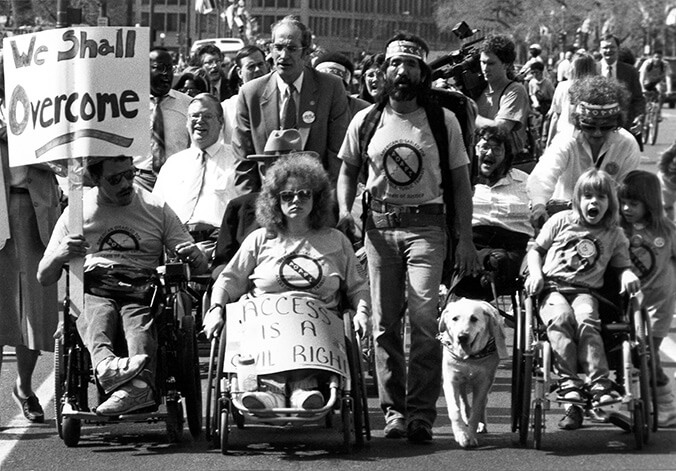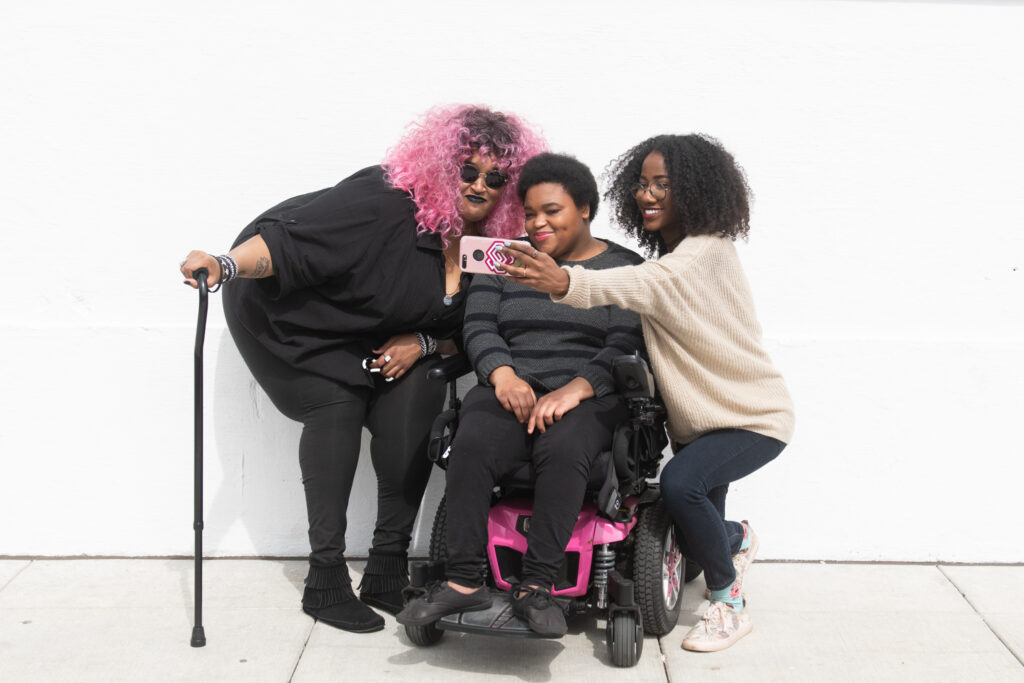The Americans with Disabilities Act: A Brief Background
Learn about the history and intent of the Americans with Disabilities Act (ADA), its impact on the disability community, and how we can collectively move toward a more disability-inclusive world.

On July 26, 1990, President George H. W. Bush signed the Americans with Disabilities Act into law. As he lifted his pen, he declared: “Let the shameful wall of exclusion finally come tumbling down.”
According to the ADA National Network, the ADA is “a civil rights law that prohibits discrimination against individuals with disabilities in all areas of public life, including jobs, schools, transportation, and all public and private places that are open to the general public.”
As explained on ADA.gov: “To be protected by the ADA, one must have a disability, which is defined by the ADA as a physical or mental impairment that substantially limits one or more major life activities, a person who has a history or record of such an impairment, or a person who is perceived by others as having such an impairment. The ADA does not specifically name all of the impairments that are covered.”
This definition of disability deems disability as a medical issue intrinsic to an individual. However, the last part of the definition, which addresses perception, recognizes systemic barriers and discriminatory attitudes as part of and determinant of a person’s disability status.
Looking Back, Moving Forward
2023 marks 33 years since the passage of the ADA. In the years following this landmark legislation, disability advocates and activists have remained dedicated to moving forward in the work to change attitudes and protect their rights, building upon the work of those who fought for the ADA.
As the late disability rights leader Marca Bristo reflected upon the 25th anniversary of the ADA: “In many ways, the ADA has changed the world. Millions of young people with and without disabilities have grown up in a world without the physical barriers that separate us. Today, people with and without disabilities are riding the same buses, shopping at the same retail stores, drawing money from the same ATM machines and watching movies in the same theaters… making the world a better place for everyone.”
Heather Watkins, a disability advocate and writer, shares: “the ADA has endowed me with a sense of empowerment and personal agency knowing the work of my forebears was so that I may know that I have a life worth living and not feel ‘better dead than disabled.’”
Challenges of the ADA
Employment
While the ADA has brought about many significant changes for the disability community over the past 30 years, the law’s original intent to ensure full and equal participation in all aspects of society, including the workforce, is still far from being fully realized. Presently, people with disabilities still have the lowest employment and highest poverty rates of any minority group.
Enforcement
The ADA was indeed a momentous civil rights victory for the disability community, but there remains work to be done. Lack of ADA compliance is quite common, but can go completely unchecked without penalty unless someone makes a specific complaint.
In an article for Rewire, disability activist Robyn Powell shines a spotlight on the issue of enforcing the ADA. She explains: “Enforcement continues to be one of the biggest challenges related to the ADA, in that it is driven only by complaints. If a person with a disability encounters discrimination, they may file a lawsuit. Businesses, if found guilty, are generally required to resolve the ADA violation and pay attorney’s fees for the complainant. There is no monetary benefit to people with disabilities to file such lawsuits, and they often take several years. In other words, the onus is on people with disabilities to ensure businesses comply with their legal obligations.”
Protecting Civil Rights
Further, people with disabilities must remain constantly vigilant to ensure that the ADA is not only enforced, but also protected. For instance, in 2017, the House of Representatives passed the “ADA Education and Reform Act” – a misnomer, as had it actually become law, it would have rolled back key protections of the ADA.

“The first step in every struggle for civil rights is necessary but hardly enough…Change happens when we put action and resources in thoughtful trust with our movement leaders. So, ADA, as you embark on another adventure around the sun, here is what I would like those who are celebrating you to do…”
– Sandy Ho, Program Director, Disability Inclusion Fund
Call to Action
Philanthropic organizations can play a key role not only in celebrating the 33rd anniversary of the ADA, but also in committing to supporting the continued progression of disability inclusion, access, and rights. This is a great year to consider doing more to increase your own inclusion practices and to encourage grantees and partners to do so as well.
Further Learning
Understanding the Americans with Disabilities Act
Google Impact Challenge: Disabilities | ADA 25th Anniversary
